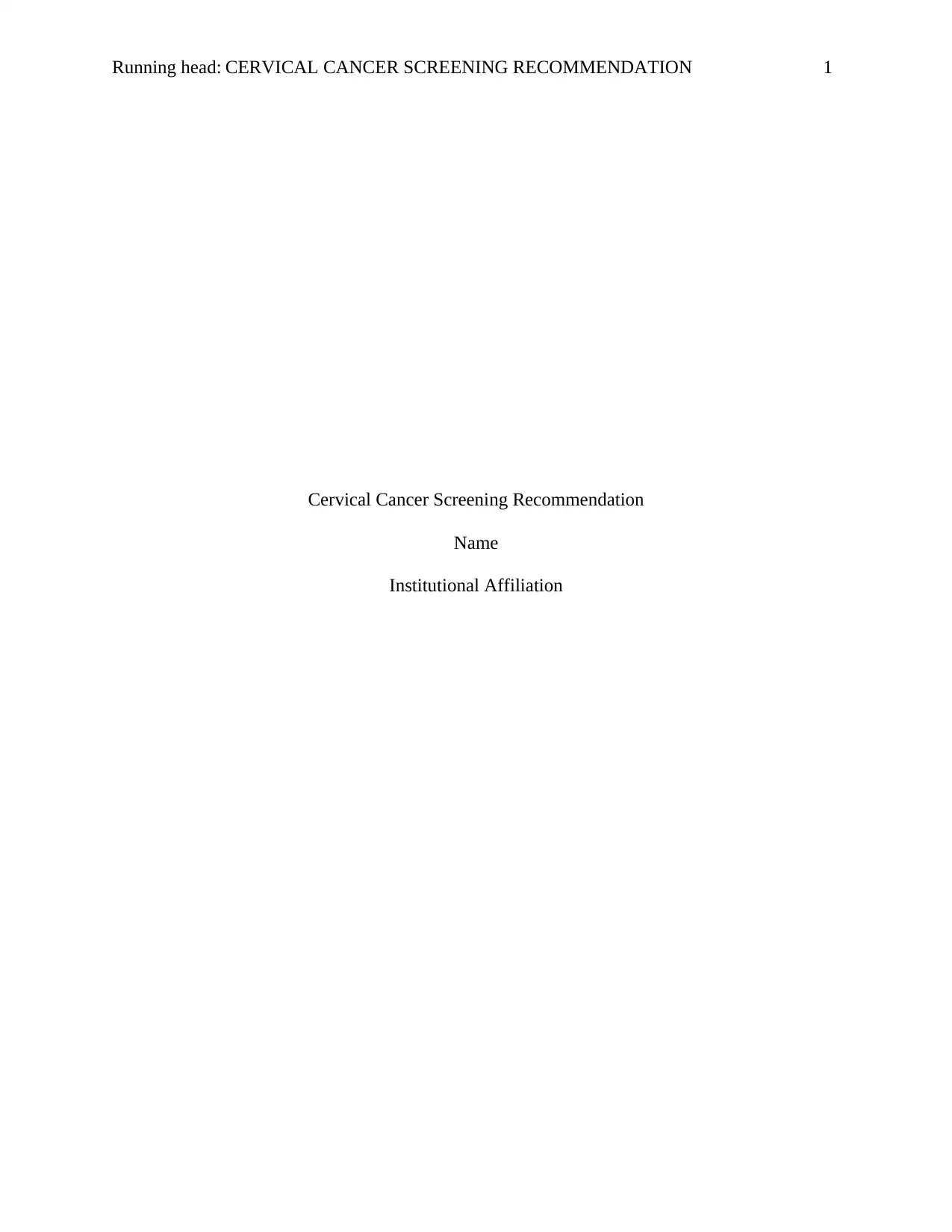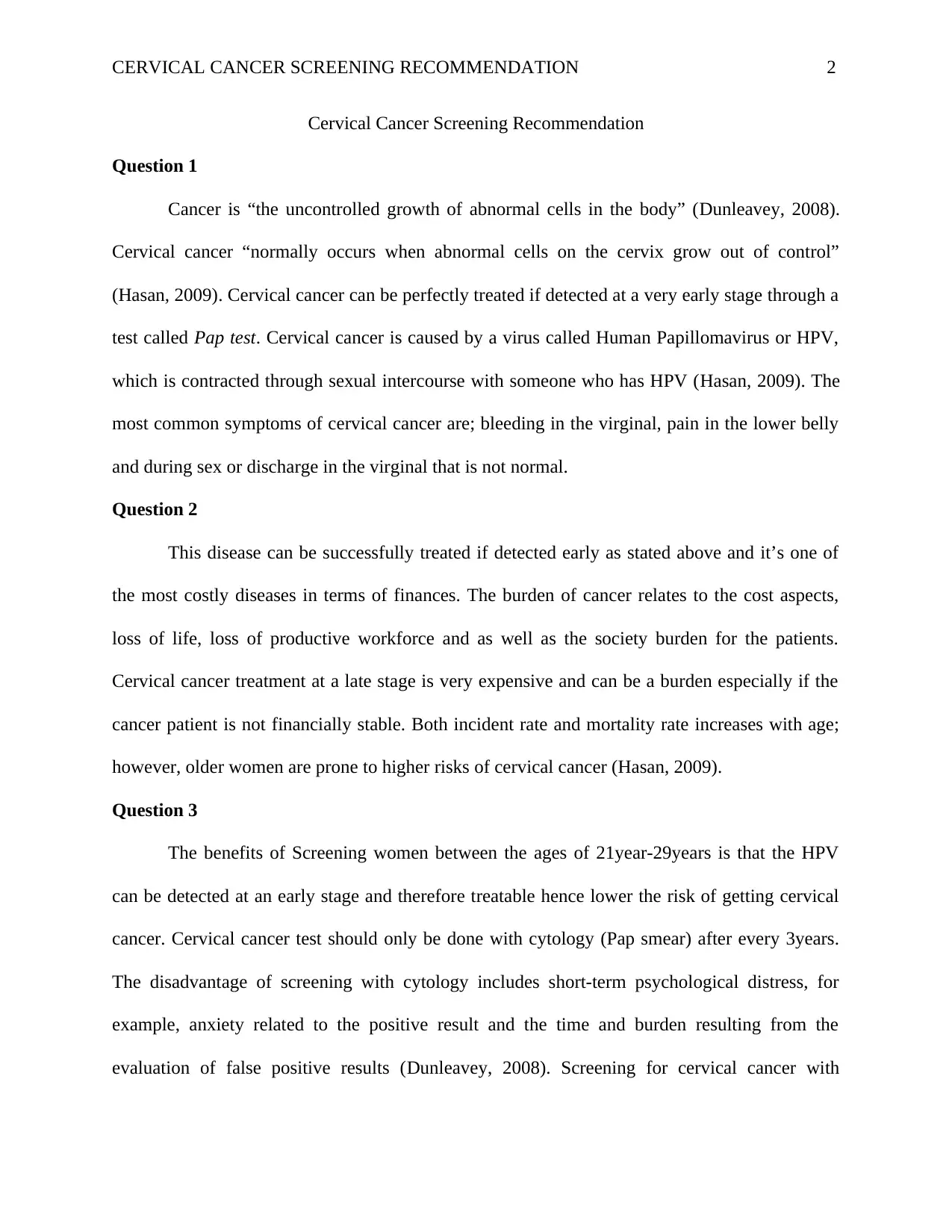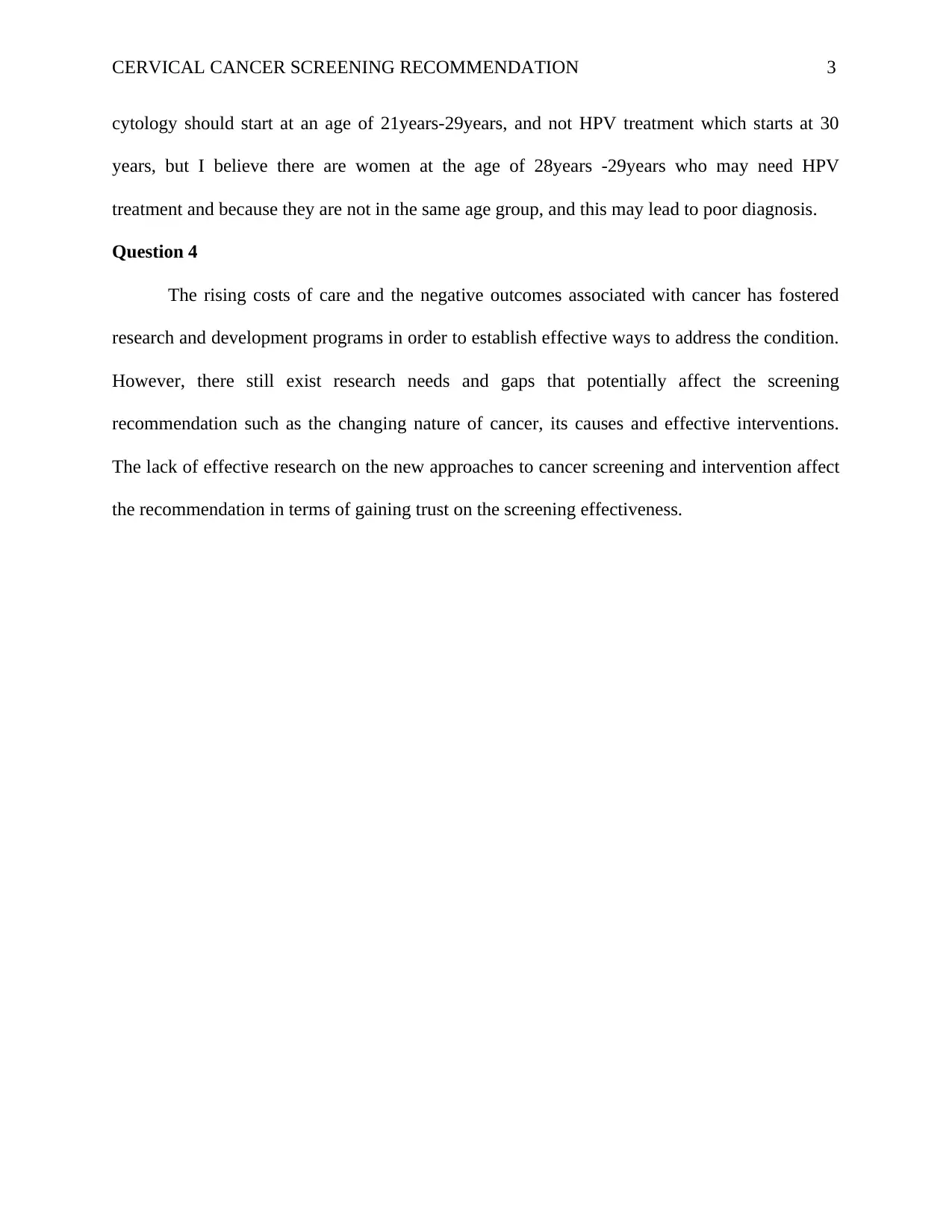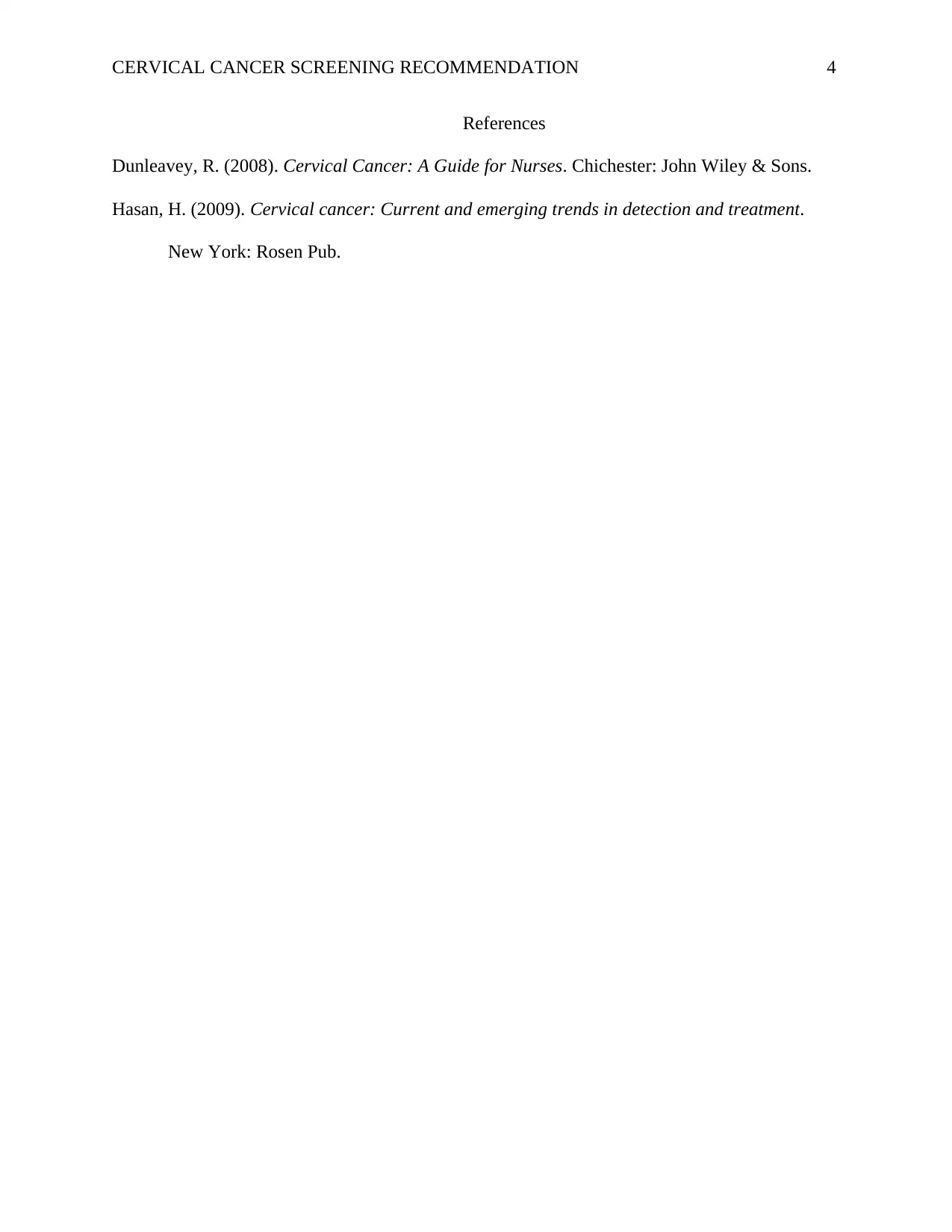Cervical Cancer Screening Recommendation Analysis Report
VerifiedAdded on 2020/03/28
|4
|533
|48
Report
AI Summary
This report addresses cervical cancer screening recommendations, highlighting the benefits of early detection through Pap smears and the role of HPV. It discusses the advantages of screening women aged 21-29 years, emphasizing the treatability of HPV at an early stage. The report also acknowledges the psychological distress associated with positive results and the potential for false positives. It further explores the challenges of screening, including the rising costs of care and the need for effective research to address the changing nature of cancer. The report concludes by emphasizing the importance of addressing research gaps to improve the effectiveness and reliability of screening recommendations, ultimately aiming to improve patient outcomes through timely detection and intervention strategies. The report also references key research findings, including the impact of cancer on the workforce and the financial burdens associated with treatment.
1 out of 4











![[object Object]](/_next/static/media/star-bottom.7253800d.svg)